Ennea&Arte: Pieter Paul Rubens – Type Nine
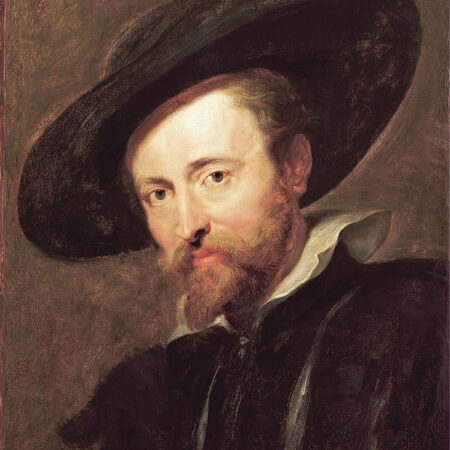
Edited by Liliana Atz “I am a simple man standing alone with his old paintbrushes, asking God to give him inspiration.” “My passion comes from Heaven, not from earthly reflections.” (Pieter Paul Rubens) Continuing with EnneaMediCina ‘s study of the lives of distinguished painters, we look at biographies of the life and psychology of Pieter Paul Rubens. “Rubens was born in Siegen, Westphalia on June 28, 1577 to Jan Rubens, a Flemish Calvinist lawyer, and Maria Pypelynckx. He spent his childhood in Cologne, where his father took refuge with his family to escape persecution against Protestants. He grew up in a financially struggling family and, perhaps because of this, used to despise the arrogant. In 1589 he moved with his family to Antwerp, where he received a humanistic education through the study of Latin and classical literature and converted to Catholicism. In 1600, he went to Venice where he admired Titian and Tintoretto and then to Mantua. In the Lombard city Rubens met Vincenzo Gonzaga, who appointed him court painter and gave him important diplomatic assignments in the artistic field. He was a man of great culture, who knew almost all European languages, in addition to Latin and Greek. These gifts enabled him to become the official painter of Flanders and the favorite artist of almost all the powerful people of Europe. His great political skills, also won him delicate diplomatic posts in Holland, Spain and England. In Italy he continued to study the great Italian art of the 16th century and figurative painting, of Raphael, Michelangelo and Caravaggio. In Venice he met artists such as Veronese, Titian and Tintoretto, from whom he assimilated the pictorial floridness that would later be one of the elements of Baroque expression. Despite all this he led a simple and upright life. Serious and tireless in his work, he was also generous and benevolent to his students. He had two wives and many children. “A unique and out-of-the-ordinary character, extremely attractive, he was an artist endowed with a solemn narrative ability,” scholar Anna Lo Bianco has written of him, who “provokes a strong impact in the viewer, animated by a new feeling of engaging participation, able to create compositions where everything is animated by a strong sense of pathos and vital energy.” In this original and extraordinary pictorial game Rubens showed in the play of parts, the many sides of his complex personality. Religious in private, he sublimated in art his strong sensual and erotic charge, his freedom of thought, and his faith in his origins, evidenced by the small figures hidden among the main figures in some of his paintings with strong symbolic value. This strength of his on the surface would almost seem to contrast with his temperament, which is described by the sources as that of a mild-mannered, mild-mannered man with an accommodating and friendly manner. The German artist and art historian Joachim von Sandrart, who got to know Rubens in 1627 during a trip from Utrecht to Amsterdam, described him in his “Teutsche Academie” as “in seinem laboriren expedit und fleißig gegen jederman höflich und freundlich bey allen angenehm,” meaning “quick and industrious in his work, cordial, friendly and pleasant with everyone.” Raffaele Soprani, in his “Lives of Genoese Artists” (Rubens often sojourned in Genoa, leaving several masterpieces in the city), wrote that “the tasty and lively coloring of this valentuomo, his gentle stroke, the facondia of his speech, and the other noble endowments that graced him, so bound the spirits of the leading knights of this city, that they ill thought their palaces were furnished without some table by him.” And even, the scientist Nicolas-Claude Fabri de Peiresc, who was in correspondence with the Flemish painter, wrote that “there is no more lovable soul in the world than that of Mr. Rubens.” Yet, writes Wolfgang Prohaska in the Austrian museum’s catalog of paintings, “beyond the official poses, his features reveal a certain skeptical detachment, combined with a watchful, inquiring gaze.” Rubens thus shows himself to be reflective and, while posed with dignity, he does not flaunt any pride: it seems as if his gaze almost wants to communicate to the observer his indifference to the position that his proximity to the great European courts of the time guaranteed him, as well as his substantial impatience with high society. Therein lies the vindication of the Flemish “little painter” who, protected by his sophistication, culture and diplomatic skills hid himself in a quiet corner, showing the world, through his exterior, the character of high social standing.” Rubens’ enneagrammatic analysis leads toEnneatype Nine, referred to as the Mediator. This psychological type tends to avoid conflict and seek peace and harmony; it instinctively goes out of its way to reconcile tensions and conflicts in both family and social spheres since what it dodges is confrontation, which it deeply fears. In childhood, this enneatype experienced neglect and little listening to his needs, which led him to feel unimportant, “transparent” in the eyes of others. The frustration experienced is at the root of his poor self-regard, his failure to perceive his deepest needs, which characterize what is called the passion of Sloth and the fixation of Self-forgetfulness. In fact, he has a hard time perceiving the emotion of anger, which he tends to sublimate with a good-natured, sympathetic, calm, relaxed, calm, affable, good-natured and simple attitude that knows how to listen and welcome the other without criticism and judgment. Even in the work environment, he is characterized by a friendly disposition and a discreet and patient appearance. In life, he tends to favor certain and quiet situations, family customs and routines. He does not like to draw attention to himself and is cautious and prudent in defending his privacy and his good personal and professional name, which, along with family and religion, he considers among the most important “assets.” Although it appears modest and graceful, this enneatype at its core is headstrong and autonomous. He knows how to adapt to situations, but he does
Ennea&ArTe: Michelangelo Buonarroti – Type One

Edited by Liliana Atz In light of EnneaMediCina we meet Michelangelo Buonarroti. “On March 6, 1475 ,Michelangelo Buonarroti, the tormented genius,was born in the small town of Caprese, Arezzo,to Ludovico Buonarroti Simoni and Francesca di Neri del Miniato del Sera . At the age of six, Michelangelo lost his mother. This family wound coupled with the significant relationship difficulties with his father and family members must have contributed to his antisocial and tormented character. Even as a boy he showed a closed, taciturn, very short-tempered and touchy disposition. His father was a controlling type who never got along with him. Michelangelo was a whimsical and sometimes overbearing “Tuscan,” who dared, almost in defiance, to measure himself face to face even with the popes, conscious of his own artistic greatness. His defiant and insolent temperament cost him the deformed nose that scarred him for life A fellow student, also an artist, who worked as a sculptor at the Medici gardens, one day, tired of Michelangelo’s constant criticism of his works, in a fit of rage, punched him right in the nose, leaving him unconscious on the ground. At his core, however, he was a man torn by conflicting passions that gave him no respite; lonely, shadowy, he spotted enemies everywhere, with disastrous results in his social relationships. So much courage, so much self-sacrifice in his work was rooted in an original wound, in a sense of fall and social inferiority that the artist suffered and from which he strenuously wanted to redeem himself. His lineage-the Simoni Buonarroti family-had belonged for centuries to the Florentine ruling class of republican faith, in which bankers and merchants of the major arts converged, but had been in the midst of decadence for a couple of generations. Throughout his life he would obsessively accumulate wealth, buying land and houses for himself, his father and some siblings, always in Florence, his elected homeland, although he now lived in Rome. Leading moreover a Franciscan life, devoid of luxuries and even major comforts: bent solely on restoring the lost rank to his lineage. Stingy to the point of absurdity, he became instead prodigal, indeed spendthrift, towards his closest friends, very few in truth, and, above all, towards members of his family who, having lost all wealth, took advantage of him, without any qualms, very lavishly. He channeled his enormous life energy entirely into creation, at the expense of earthly affections and pleasures. Misanthropic, except for a platonic relationship with the noble Vittoria Colonna, he never married. Over time, the artist’s alleged homosexuality has also been speculated, examining various verses he wrote and dedicated to a number of men, starting with Tommaso de’ Cavalieri, the one who was close to him until his death. On this topic, however, no certainty has been found. His true one great love remained work in all its phases, and he never entrusted anyone with tasks he knew how to do himself-from choosing the marble to transporting it to rough-hewing to final fabrication. More than other masters of his time he had to “turn up his nose” to serve patrons whose political and religious ideals he did not share. The hard labors to which he subjected his body also had serious repercussions for his health, but he never wanted doctors around him. And he would forget to eat and sleep for weeks on end when he was in the throes of his creative flair. No one could contradict him in his foibles; if it happened, he would start ranting that everyone was cheating him, and that no one could be given credit. The brilliant artist died in Rome on February 17, 1564. Before closing his eyes, he wanted to dictate to the few people present his will. He said simply, “I leave my soul to God, my body to the earth, my stuff to my nearest relatives.”(1)(2)(3)(4)(5) The complex personality of this artist brings one back to Enneatype One of the Enneagram, referred to as the Idealist, characterized by the passion Ira and the fixation on Perfectionism. This child in childhood was deprived of the possibility of “being a child,” with strict rules and emotional blackmail, accompanied by little personal recognition, conditioning his possibility of free expression of vitality. Emotional frustration was the obvious consequence. The child’s sensitivity to his parents, his need for love, approval and consideration, soon turned into this character type’s willingness to solve problems for them. The inability to achieve perfection (cognitive fixation) makes him feel guilty for not living up to situations and also fuels his anger (passion), which this type externalizes in the form of impatience, frustration, annoyance, judgmental criticism, toward the imperfections of people and the world. Anger that, the social subtype, for “just cause” allows itself to express. He tends to correct others by appealing to the correctness of his view of things. Fearing his own unfitness and corruption, he fights to combat the wickedness, corruption and faults of others; thus in the face of infractions he can finally manifest his “righteous anger.” For this character, wary of levity and pleasure, a controlled affectivity, a real passion for rules, and rigid behavior are evidenced. His strong morality leads him to always act for what “should be done,” ignoring his own deepest desires Regarding health, a psychoanalytic study of Michelangelo’s life leads back to his works, poems and letters, where he himself tells of his own depressive despondency and leading a joyless life. Besides that Michelangelo suffered from osteoarthritis in his hands, gout and kidney stones. For the EnneaSymbolic interpretation of the character click here Bibliography: (1 ) (2 ) ( 3 ) ( 4 ) ( 5)
Ennea&ArTe: Raphael – Type Seven
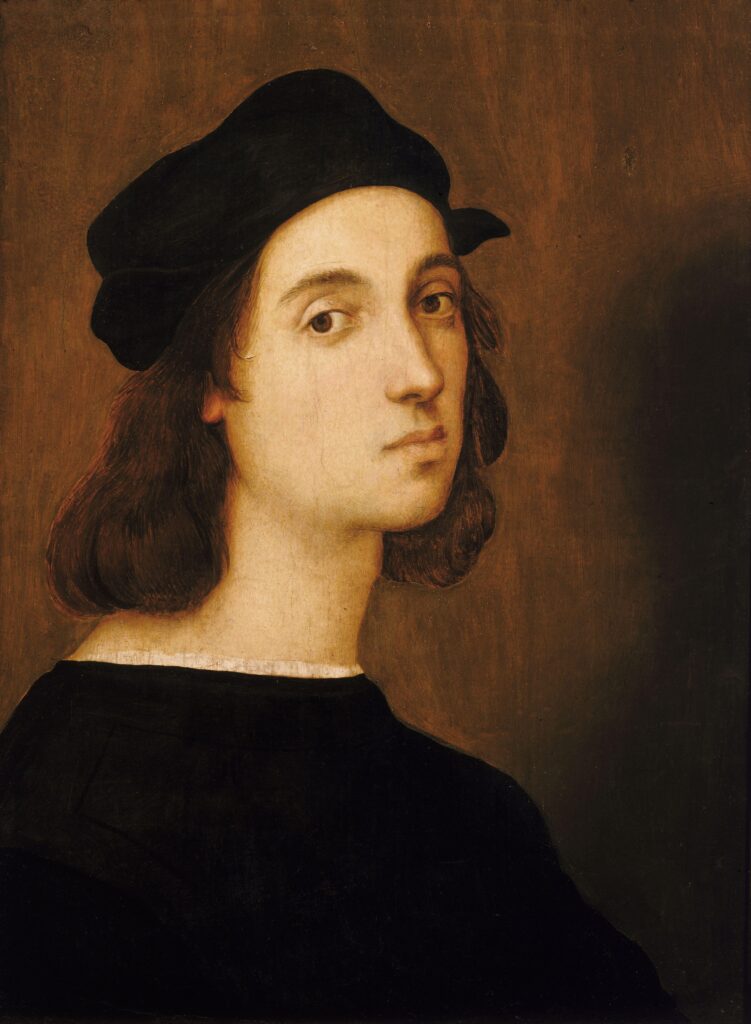
Edited by Liliana Atz Continuing our study of ennea-symbolic typologies in the light of EnneaMediCina, we encounter Raphael Sanzio. The son of Giovanni Santi, a painter in the service of the Montefeltro family, Raphael was born in Urbino in 1483. Handsome, sociable, affable, cultured and open to the stimuli of other masters, he personified the image of the ‘court painter’. This way of being opened many doors for him both in his private life and in his professional career, making him well-liked by rich lords, high prelates and the simple folk. In the light of the study of the Enneagram, Raphael belonged to type Seven, the Optimist, the one who can induce cheerfulness and joie de vivre. This enneagrammatic typology is characterised by the passion of Gluttony and the fixation of Fraudulence. A contemporary of Michelangelo Buonarroti, it is said that the latter envied him not only for his prowess, but also for the way he related to others ‘with mellifluous flattering words’. An artist of persuasion, this guy manages to circumvent obstacles without too much effort, skilfully using the art of oratory, seductiveness and his innate likability. “Raffaello fu il primo e unico figlio di Giovanni Santi e di Magia di Battista di Nicola Ciarla. His mother died when Raphael was eight years old and his father when he was eleven’. The Seven tends to avoid suffering, hiding behind a mask of joviality. It handles pain and difficulties by taking refuge in the memory of pleasant moments and removing unpleasant ones. That is why, when faced with things that are too complicated, painful and limiting, he tends to run away, in the unconscious fear that stopping will lead him to get in touch with his inner self. “A highly sought-after painter, his atelier was in some ways the opposite of that of Michelangelo, his contemporary, who preferred to work with the minimum indispensable aids (preparation of colours, plasters for the frescoes and more) while maintaining absolute leadership over the outcome of the final work”. Raphael, on the other hand, increasingly delegated large parts of the work to his assistants as the years went by’. The unredeemed Seven does not know how to stop on things, so he engages on several fronts at once, but without deepening anything, jumping from one experience to another. Besides loving the idealised and divine beauty, however, Raphael also loved the earthly and sensual beauty of women. According to Giorgio Vasari, Raphael had a very disordered and out-of-character sex life; it is said that he divided his youthful years between his passion for women and his passion for Art. In “Le Vite” Vasari relates that: “the Cardinal of Bibbiena, a friend of his, had been pestering him for many years to give him a wife and he did not refuse her but said he still wanted to wait four years. Time passed and he courteously accepted his niece as his wife after four years with the cardinal. And because he was always ill-at-ease with this entanglement, he put much time in between so that the marriage was not yet consummated for Raphael, and this he did not do without honourable purpose, because having served the Court for so many years and being a creditor of Leo X, it had been a hint to him that when he had finished the room (Vatican rooms), as a reward for his labours and virtues, the Pope would give him a red (cardinal’s) hat. This would have allowed him an important career in the church world. But he in an important place went back to his loves. He did not care so much about his engagement to the niece of the Cardinal of Bibbiena or Leo X’s promise to make him a cardinal’. In the irredeemable pole, he is a rebellious, undisciplined type, who does not keep his commitments and interprets the rules in a personalised way, continuing to do what he wants. He uses the art of storytelling to get himself out of trouble, but if that is not enough, he openly rebels against the pressure. This typology is in fact always in spasmodic search of novelty, diversity, the unknown, the exciting experience that can fill its inner voids: food, sex, situations… Vasari recounts that: ‘And so it came to pass that once he was more disorderly than usual because at home he returned with a very great fever – probably a venereal disease – which took him away within a short time. It was holy Friday, 6 April 1520. Bibliography: Wikipedia Raffaella Arpiani – Essential Art Artfiller EnneaMediCina
Ennea&Arte: The Psychology of the Greats of Art

Edited by Liliana Atz By analysing the psychological typology of some great personalities from the world of art, a study of EnneaMediCina comes to life through the use of its matrices: the Enneagram and Chinese Medicine. It is assumed that each person, at birth, encounters difficulties to which he or she reacts by creating a strategy that he or she will tend to preserve for life. The ancient psychology of the Enneagram has proven to be a practical and powerful system for identifying one’s personality matrix. For example, if in childhood an individual suffers violent aggression from significant adults, especially at times when he or she shows weakness and fragility, he or she will tend to develop strategies to respond to these aggressions: he or she will tend to be strong, violent if necessary, never showing weakness and fragility. It will build an ‘armour of ‘strength’ with which it will defend itself against external aggression. The Enneagram shows nine different aspects of response to environmental stimuli and he will prefer one of these modes, locking himself into an unconscious, repetitive loop. Linking the above to ancient Chinese Medicine for which health is the result of balanced nutrition, breathing, defence against both external and internal pathogens, and the harmonious flow of the so-called Five Emotions and Seven Feelings, one can see how much a psychic problem is reflected in the body and vice versa. There is no separation between psyche and soma as one manifests and is reflected in the other. Should an imbalance manifest itself, it is the organ and viscera connected to the element, to the predominant structure/enneatype characterising the psychological type, that will be the first to signal disharmony and fall ill. What better tool than observing one’s own emotions and reactions to be linked to one’s physical discomforts to understand one’s personality and how the latter is a block to the free flow of life and change? N.B.: where the biographies of the subjects examined make it possible, a connection will be made to the EnneaMediCina system. EnneaMediCina
Ennea&ArTe: Caravaggio – Type Eight
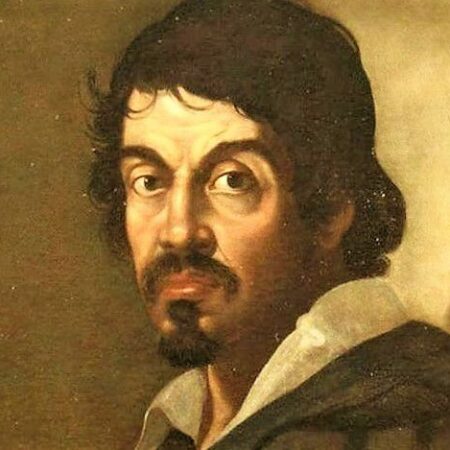
Edited by Liliana Atz To understand an artist, to try to interpret his character, among the many possible realities, it is important to analyse what biographies tell about him. What, indeed, lies behind the genius of such a person? What shadows characterise the other side of his life, his psychology? How to hear the artist from the ‘inside? By studying the character in the light of EnneaMediCina, we get to know him better. “Caravaggio, pseudonym of Michelangelo Merisi was born in Milan on 29 September 1571 (approx.). Considered today one of the most celebrated representatives of thewestern art of all times is the founder of the modern naturalistic current, as opposed to Mannerism and the Classicismas a forerunner of sensitivity baroque The main component of his style is the realisation of perspective and three-dimensionality through the dramatic and theatrical use of the chiaroscuro technique. The painter’s parents, Fermo Merisi and Lucia Aratori, were natives of Caravaggio. They were married on 14 January 1571 with the protection and help of the Marquis of Caravaggio and Count of Galliate Francesco I Sforza, who also acted as their best man at their wedding’ (source: Wikipedia). Reflection: there was a custom of having compromised women (by nobles) married off. Was this one of those cases? So how was Caravaggio’s relationship with Fermo Merisi? How much did the relationship with family members mark your human side? ‘A particularly restless soul, he faced serious vicissitudes in his life until the crucial date of 28 May 1606 when, having committed murder during a brawl and been sentenced to death, he had to flee the city of Rome to escape capital punishment (source: Wikipedia)’. According to the psychological vision of the Enneagram, behind the interpretation of reality deformed from childhood by the subjective aspect behind which everyone learns to mask their individuality lies the separation from the Self and the divine. The human being is inwardly out of balance as he does not possess a single ego, but many conflicting aspects that interchange from moment to moment, stretching between extreme poles: unredeemed (immature, unhealthy) and redeemed (mature, healthy). From the analysis of his biography Caravaggio belonged to the enneatype Otto and the centre of instinct. This type referred to as the Leader is characterised by the passion of lust and the fixation of vindictiveness. The underlying emotion behind his actions is anger/rage. This Enneatype tends to shy away from weakness, exalts its strength and knows no half-measures. Its reality is based on confrontation, control and force. He despises cowards and excessive indolence. Authoritarian and combative, he essentially wants power over others, thus taking revenge for the conflicts and injustices suffered in childhood. Source: Wikipedia Source: EnneaMediCina. The Five Ways of the Soul Other artists’ studios to follow….
How are the organs of the human body connected to the psyche?
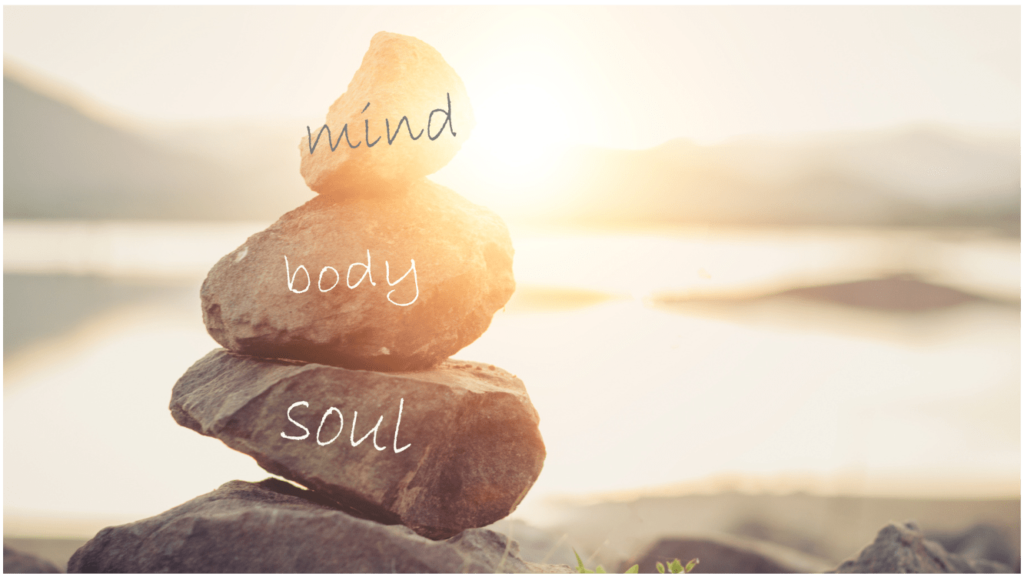
“It now seems clear even to Western science how the unity of body and mind are fundamental to the processes of treating and healing illnesses, and how the harmonisation of the Five Emotions and Seven Feelings in Chinese Medicine are closely intertwined with what is referred to in epigenetics as the healing of psychological wounds related to limiting patterns and beliefs. “According to PNEI, emotions are biochemical facts that translate into cascades of molecular messages, which reach the body, including the immune system, establishing a continuous dialogue between the nervous, endocrine and immune systems, determining health or disease. “This has been affirmed for millennia by ancient Chinese Medicine, according to which health is the result of balanced nutrition, breathing, defence against both external and internal pathogens, and the harmonious flow of the so-called Five Emotions and Seven Feelings. “Should an imbalance occur, it will be the organ and viscera connected to the element, to the predominant structure characterising the different enneasymbolic types, that will be the first to signal disharmony and fall ill. In time, if the problem is not resolved, the entire psycho-physical structure will be affected.”
Martial arts inspired by the Tao – by Nadia Clementi
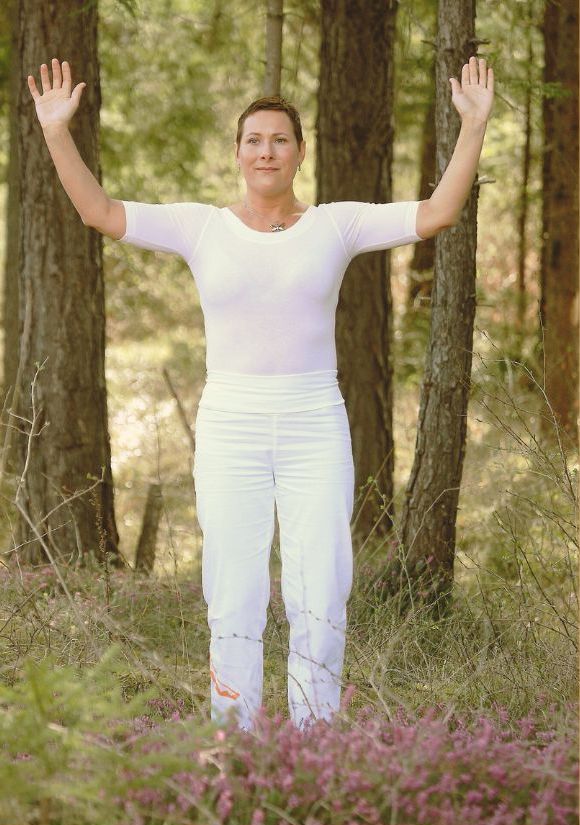
A Taoist saying states: In movement, find calm, in calm, find movement: we talk about this with Liliana Atz, president of the San Bao Association At the end of the article, at the request of Dr Liliana Atz, we also publish the English version of the interview. In traditional Chinese Taoist philosophy, the Tao’s fundamental function is to represent the universe, eternal but at the same time in motion.It is precisely with this spirit that the San Bao association spreads the teaching and initiation of martial arts inspired by the Tao in Trentino, in particular the knowledge of Tai Chi Kung, a Chinese art with a millenary tradition aimed at acquiring and preserving harmony between body, mind and spirit.Specifically, Tai Chi Kung is a motor technique that, among its many certified benefits, aims to improve muscle tone and elasticity through coordination and concentration. These exercises are useful in preventing cervicalgia and other spinal disorders, while breathing activity brings benefits on both a mental and emotional level, an excellent ally against, for example, stress and insomnia.Furthermore, according to the principles of Chinese medicine, breathing and nutrition are the two sources of acquired energy that enable our bodies to develop and live.It is well known that most of the typical ailments of our time derive from food-organism interaction, but at the same time, nutrition can open up immense preventive and curative possibilities.To find out more about the benefits and techniques for rebalancing the body and mind’s energy, we turned to the founder of the San-Bao Association, Liliana Atz, a psychology graduate, Shiatsu practitioner-instructor, Wudang and Yang style Tai Chi teacher, who has been practising these activities and promoting courses for many years, where the ancient Chinese medical-philosophical disciplines are integrated with the discoveries of western science. Who is Dr Liliana Atz Psychologist, Tai Chi Kung and Shiatsu instructor, expert in Traditional Chinese Medicine, has been teaching for years.A firm believer in the common thread that unites Eastern therapeutic-philosophical disciplines and Western scientific culture, she founded the San Bao association, where she promotes personal growth activities through body-mind work.An Enneagram teacher, she is the author of the books ‘EnneaMediCina’, as well as articles and publications in the field. Dr Atz, what impresses you most about traditional Chinese medicine? “Chinese medical-philosophical culture fascinated me because of its comprehensiveness as it leads to an integrated view of man, understood in its components of body, mind and spirit.“By working on the body, therefore, e.g. with Tai Chi Kung, you also rebalance your mind and emotions, leading to feeling better on all levels.” Can you briefly explain what the principles of traditional Chinese medicine are? “Traditional Chinese Medicine (TCM) is one of the oldest and most fascinating medical-philosophical systems in the world, which the WHO (World Health Organisation) included in the Ottawa Charter for Health Promotion back in 1986.“The main principles of this medicine are: Qi (energy), the Tao (the eternal, essential and fundamental force that flows through all matter in the Universe) , the Yin/Yang law, the law of the Five Movements and their phases, the energy Meridians. All these factors interrelate with each other in a multitude of different ways.“For Traditional Chinese Medicine, the disease state comes from the disturbance of the energy balance (Chi or Qi). This medicine intervenes to rebalance health with various therapies, the best known of which are dietetics, pharmacology, acupuncture, massage and medical gymnastics, in forms known as Tai Chi and Chi Kung.“What is really interesting is that its ancient principles are now increasingly reflected in quantum physics, as well as in neuroscience discoveries.” You are qualified to teach the Enneagram, what is it? “The ENNEAGRAMMA is an ancient method of knowledge that helps one to make truths about oneself and to gain security and confidence by discovering one’s most hidden possibilities.“In practice, it is a geometric drawing that, like a map, describes the various personality types. Its origins are said to date back over 2000 years. “It was introduced to the West at the beginning of the last century, by the Causa spiritual master G.I. Gurdjieff, who used it as a study tool for his students.“It was subsequently developed and disseminated by various scholars, among them the psychologist Oscar Ichazo and the psychiatrist Claudio Naranjo, his student, to whom we owe the greatest propagation and integration of this system with contemporary psychology.”The Enneagram proves effective in all those activities and contexts where relationships with other people are of importance:– To increase self-knowledge and self-esteem.– To better manage one’s emotions .– To increase one’s interpersonal skills and better manage one’s energy resources. Would you like to explain what the Tai Chi Kung activity consists of according to ancient Taoist methods? “Tai Chi Kung is an ancient Chinese psychophysical discipline based on the principles of Taoist philosophy.“This tradition considers the universe as an energy field, the result of the perfect interaction of the two fundamental cosmic principles: Yin and Yang, which constitute the symbol of the Tao and represent the most important and characteristic concept of Taoism.“Through the understanding of the cosmos, the universe and nature, one comes, for Taoism, to an understanding of oneself, to one’s individual growth.“This tradition considers the universe as an energy field; there is a holistic, analogical view of the human being, according to which health and well-being are the consequence of man’s psychological, energetic, physiological and spiritual balance.“It is a psycho-physical art of gradual development of the body-mind that through the execution of precise sequences helps to improve one’s physical and mental energy and increase one’s well-being.“Its structure is such that the observer of Tai Chi practice can only grasp its superficial form, failing to grasp the profound aspects of working on the body, breath and mind.“These stages are not separable because they are reflected in each other: the body relaxes, breathing slows its rhythm and becomes deeper, the mind empties itself of thoughts, anxieties, worries.“This state becomes a moving meditation and some have called this practice Chinese yoga.” What are the benefits of
The biological/emotional psychology of enneatypes
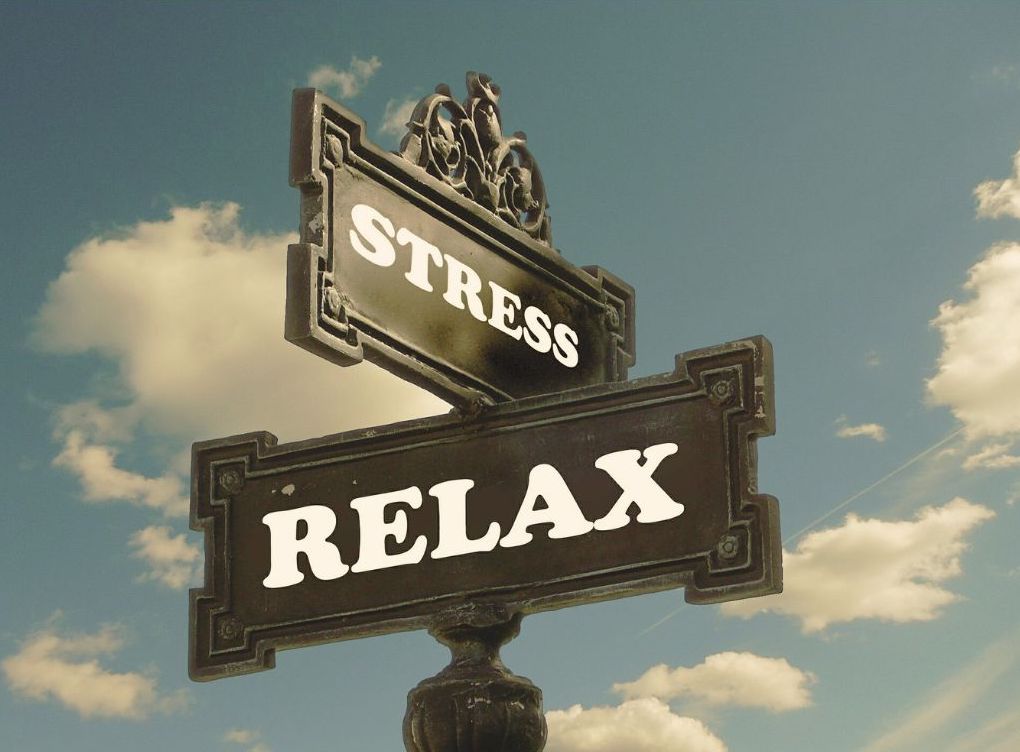
The acquisition of self-awareness and control of one’s emotions, as we will see in this course, are the basis of holistic health of body, mind and spirit. To better understand EnneaMediCina, I therefore consider it essential to know the foundations on which it rests. We will therefore begin a path of approach in small steps, starting with the study of the Enneagram, in the light of the discoveries of Western science. Over and above all possible individual differences, the Enneagram makes it possible to identify the individual’s main character proclivities, worldviews and ‘vocations’, enabling him or her to broaden his or her opportunities for self-understanding and inner modification, which, as we shall see, affect health in a global sense. The nine character types of the Enneagram are grouped into three centres, corresponding to the basic ‘three brains’: 1.Instinct (belly): 8, 9, 1; Emotions (heart): 2, 3, 4; Raziocination (head): 5, 6, 7. Each centre is characterised by a common emotion, which influences the way of being and relating of the individual enneatypes. It is now well known that already during pregnancy the foetus develops its own subjective identity. As pointed out by Canadian psychiatrist Thomas Verny, the embryo’s experience inside the womb represents its first contact with the world, a contact that will profoundly influence the formation of its future personality.Within the enneagrammatic map, each typology represents a specific defence strategy, which the new born uses in its process of adaptation to the relational dynamics entertained in the family environment. With reference to the specific combination of genotype and phenotype there will, therefore, be a basic placement in one of the three centres and three Enneatypes of the Enneagram. These are strategies that the child perceives as effective behavioural patterns, suitable both for its survival and for obtaining affection and attention. These traces become fixed in his psyche, later influencing his behaviour, even as an adult. The instinctive centre: enneatypes 8, 9, 1. In the newborn, the first brain areas to reach full development are the brainstem and midbrain, which regulate bodily functions essential for survival, such as breathing, digestion, excretion and thermoregulation. Since the brain in the infant is not yet fully formed, therefore, what the child perceives in its first years of life is recorded in the ‘instinctive brain’, the most visceral of the three centres and the focal point of the individual’s psycho-physical well-being. Then the limbic system, which handles the emotional aspect of the person, and the neocortex, which allows abstract thought, develop. The growth of each brain region and its related functions depends to a large extent, on the stimulation that the ‘little man’ receives, right from gestation and, therefore, on the possibility of creating new connections between neurons; positive rather than negative experiences favour harmonious growth and development of the individual. The way the brain develops determines a person’s cognitive, affective and social capacities, as well as his or her predisposition to physical or mental illness. Several studies show that children who are listened to, caressed, supported and encouraged show increased brain activity (measured by electroencephalogram), as well as lower levels of the stress hormone cortisol and adequate levels of Igf-1, a hormone that plays an important role in growth processes. Other studies confirm how anxiety and tension affect the function of the belly, the ‘second brain’, with important repercussions on the function of the entire organism. Dr. Gershon of Columbia University states that ‘the gut helps fix memories related to emotions, playing a key role in signalling joy or sorrow’. In the belly there is, therefore, a brain that assimilates and digests not only food, but also information and emotions that arrive from outside (continued….). Bibliography: Michael D. Gershon – The Second Brain – Utet editions. Glaser D. (2000) Child abuse and neglect and the brain – a review. Journal of Child Psychology & Psychiatry, 41, 97- 116. Glaser D. (2003) Early experience, Attachment and the Brain in Corrigal J. & Wilkinson H. Revolutionary Connections: -Psychotherapy & Neuroscience pp. 117-133. London: Karnac. Parent Network for the Post-Istituzionalized Children (Spring 1999): overview of the post-istituzionalized child. The post, 1. www.pnpic.org/news2.htm . Perry BD (2000) : Traumatized children : how childhood trauma influences brain development. http://www.childtrauma.org/CTAMATERIALS/Vio_child.asp Shore R. (1997): Rethinking the brain. New York: Families and the Work Institute. Teicher MD (2000): Wounds that time wont’heal: the neurobiology of chikd abuse. Cerebrum: The Dana Forum on brain science, 2(4), 50-67.
The importance of the Enneagram in integrated medicine
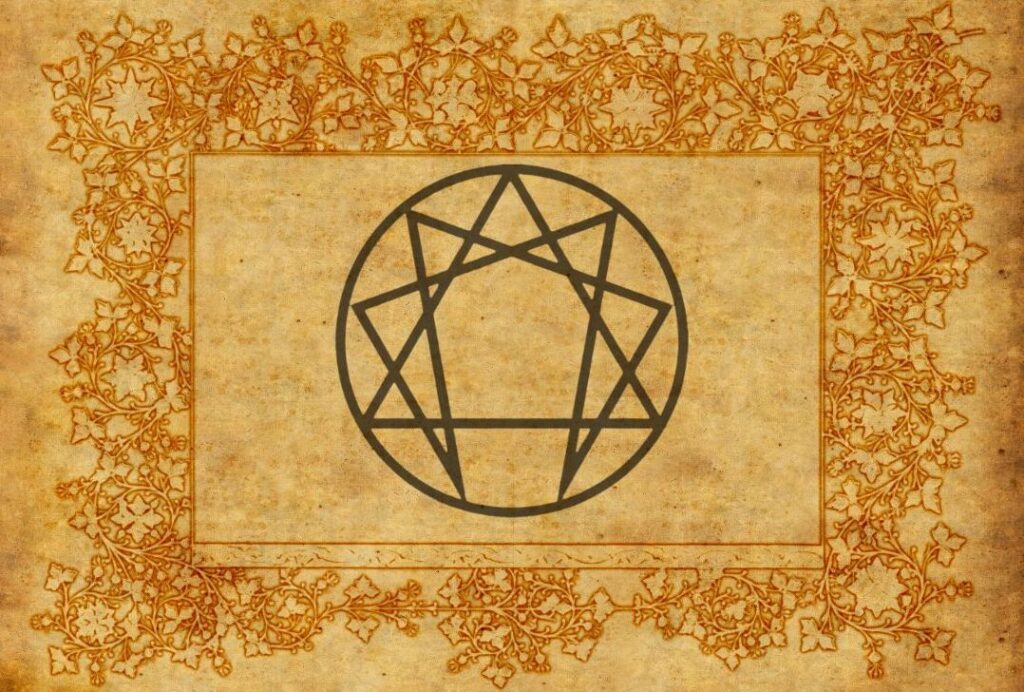
Abstract: The Enneagram of Psychological Types is a system for identifying personalities. It is, however, a somewhat reductive definition as it also serves a balanced inner evolution. In Greek ennea means ‘nine’, while gramma means ‘sign’. The graphic symbol is that of a nine-pointed star where each one represents a personality. In fact, the Enneagram describes nine different personality types, nine strategies for relating to reality. It has remote historical origins: the last chronicles date back 2,500 years. The origins are unknown although there are historical references to Babylon and the Middle East. Later, there is evidence in the 14th or 15th century from the ‘Sufis’. From them came the training of G.I. Gurdjieff (1910) to whom we owe the spread of the Enneagram in Europe. Later there is more testimony from Ichazo (1960) who claimed to have learnt the technique from the Sufis and not from Gurdjieff. Here a division is created: Gurdjieff’s teachings remain within his own study groups; while those of Ichazo pass through the Institute of Arica; from this is formed Claudio Naranjo who in turn will teach the Enneagram to the Jesuits. Currently the Enneagram has been greatly re-evaluated as it has proved to be a practical and powerful system for identifying personalities. It is assumed that every person, at birth, encounters difficulties. Depending on the type of difficulties or problems and how he reacts to them, he creates a strategy that he will tend to preserve throughout his life. For example, if in childhood an individual suffers violent aggressions by significant adults, especially in moments when he is weak and fragile, he will tend to develop strategies to respond to these aggressions: he will tend to be strong, violent if necessary, he will never show himself weak and fragile. He will build an “armor of “strength” that will preserve him from external aggressions. It prefers one strategy over nine available. In fact, the Enneagram shows nine different ways of reacting to reality. We choose one by giving up the other eight. Family history has a fundamental importance in the creation of the typology…. Taken from: Biointegrated Medicine – Dr. Vincenzo Fanelli
The biological/emotional psychology of the enneatypes – 2
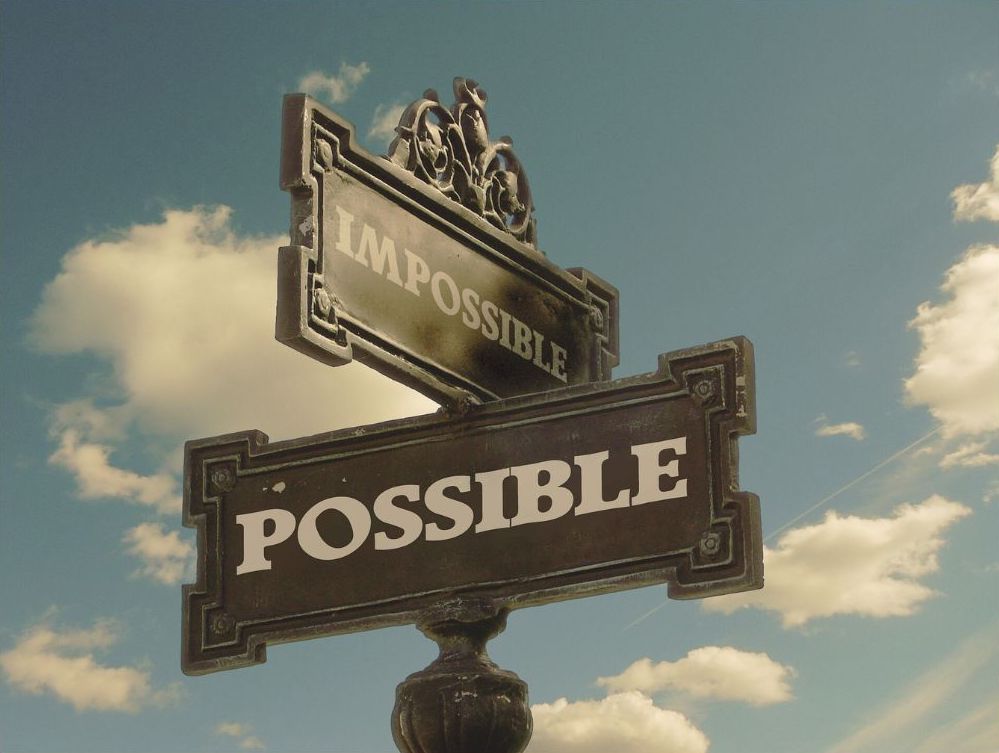
The instinctive/motor center. Each center is characterized by a basic emotion, which profoundly influences the way of being and relating of the different enneatypes. Acquiring awareness and learning control strategies is the basis of an effective integrated bio-medicine path. The types 8, 9 and 1, so-called “belly”, are characterized by the prevalence of the instinctive component. These enneatypes tend to act impulsively, responding with concrete actions to both environmental and relational stresses. The emotion that characterizes this triad is “anger”, which each of the three enneatypes manages in different ways: manifesting it (e.8), denying it (e.1) or remaining unaware of it (e.9). An enneatype 8, for example, processes anger by manifesting it decisively, driven by the need to prove that he is the strongest. An enneatype 9, on the other hand, elaborates it unconsciously, manifesting it little, for the instinctive need to pacify the environment in which it lives. Still different is the modality of the enneatype 1, which internalizes it, denying it verbally, but expressing it through the body. The members of this enneatype, yearn to prove to be perfect, but the impossibility of fulfilling such a purpose generates anger, which being forced not to recognize, somatize on a physical level … (to be continued)
